Your guide to understanding how aim works on artificial turf.
Putting Baseline
Putting is an essential stroke in the golf, as it can greatly change a player’s outcome in a single round. Any putting surface, natural or artificial, has key playability parameters that determine the “putting quality” of such a surface. Bounce, spin, trueness, speed, aim, firmness, and regularity are some of the key attributes that affect “putting quality”.
To secure our synthetic turf greens putted akin to natural greens we developed standardized testing methods to evaluate both natural and synthetic putting greens. These testing methods help give you the country club golf course experience at your own backyard putting green.
The Putting Green Assessment Tool is created to objectively measure the effect of distinct surfaces on the golf ball. The procedure is automated in such a way that it remove the human interference and variability. For instance, a golfer requested to putt 10 times will likely produce 10 different shots. It uses a simple device equipped with a free swinging putter to repeatedly reproduce identical ball strokes for the putting motion, and two launching mechanisms that apply backspin to the ball from ground level and from 2ft from the ground. The apparatus generates data related to ball strike, spin, bounce, and aim. Other tests used in the protocol are familiar to most in the golf industry: speed and firmness(Stimpmeter and TruFirm).
This practice can be used to:
1. Establish a base level for model playability of putting greens using natural grass greens at the highest level;
2. Benchmark playability of a specific course vs. the baseline;
3. Benchmark the playability of an artificial putting system vs. natural green;
4. Create product comparison data and advance product development intentionally to achieve a specific target.
How Turf Affects Aim
Aim is a basic skill you have to perfect to get the shot dead on every time, but did you know that the quality of the turf you’re on plays a role, too? Here are the few things that affect how the ball reacts when you’ve taken your swing and the ball comes to rest on the turf:
Turf Stiffness
The rigidity of the turf influences how the golf ball will move throughout the putt, if the fiber is not optimized for putting particularly it can create erratic ball movement while rolling ”chatter.”
Friction Properties
Friction properties amidst the ball and the turf also hugely affect how the ball slides and rolls. If putting surface friction is not optimized it will not correctly transition the club face and spin will create a bouncing effect instead of a smooth roll.
Pile Lay
A natural green is rolled to guarantee the fibers are not standing upright. Correctly infilled putting greens will imitate natural rolled greens and avoid grain irregularities.
To test aim and surface variation; we measured the relative variation of standardized putts on a multitude of various putting surfaces (bermuda, bent, nylon synthetic, polyethylene synthetic, and polypropylene synthetic)
The Southwest Greens Difference
Having a good quality turf will give you the understanding to know the ball will react the way it is supposed to. The variety of turf will surely affect your shot. The correctness of the turf lets the aim be as accurate as possible, and you can now have this at your home with our fan-favorite Golden Bear Turf.
Golden Bear Turf’s aim is scientifically developed and tested to go toe-to-toe with pro-quality putting greens. Shot after shot and putt after putt, Golden Bear has the tightest perimeter and the best aim of any putting surface. For pro-level consistency, it’s simply the best synthetic green for putting aim on the market.
